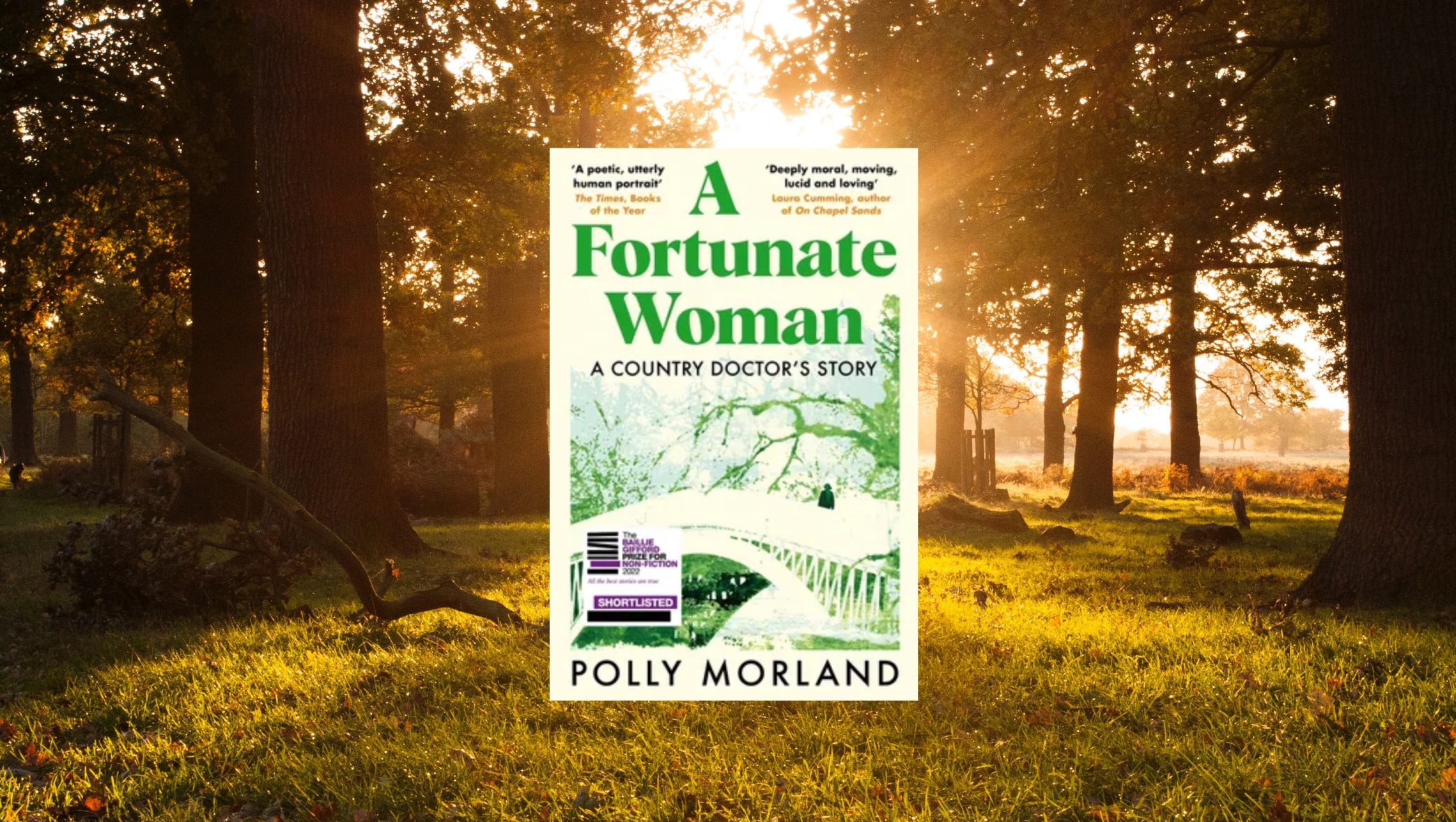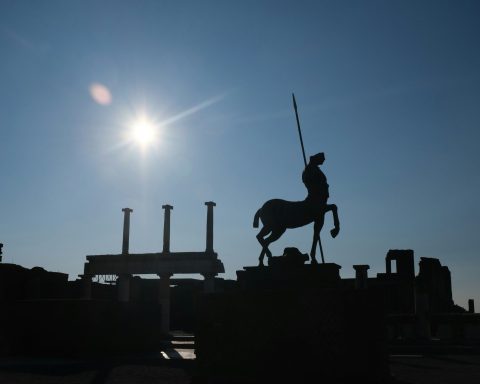
What are the personal and human factors that most motivate and anchor our best healthcare? What best nourishes and sustains both patients and healthcarers to endure together life’s most difficult challenges? This book answers such questions with luminous and engaging clarity.
There are some books that combine the entertaining, the personally immersive and the weightily important with seamless ease. A Fortunate Woman is one of these.
A journalist and documentary filmmaker, Polly Morland, focuses her skills to portray the human and personal substrate of healthcare that she sees is now so often neglected and displaced. The serious implications of this have long been documented by widespread academic and medical literature. Polly Morland’s fresh contribution here certainly draws from these, yet goes further by a kind of retreat – by replanting this serious material back into its human and natural form: this is a collection of vignettes and descriptions cunningly sculpted to iterate the same messages academics and practitioners have been attempting to convey – with mostly little effect – for many years.
The fact that A Fortunate Woman has quickly received such good reviews and attention in the mainstream media may mean that Polly Morland might, at last, get the kind of substantial consideration that dedicated practitioners and academics have not been able to wrest from our governing authorities. Maybe her graphic skills may galvanise in a way that data-evidence and formal argument has not.
It may be that there are two fortunate women here: the author, through the formidably beneficent Dr I, felt herself blessed by finding such a rich source for enquiry, wonder and haloed admiration.
Morland starts with a train of serendipities. While clearing the recently vacated house of her elderly and very infirm mother she discovered a ‘lost’ copy of John Berger’s fifty-year-old, much lauded A Fortunate Man. This seminal classic in its time broke new ground: by weaving essayed description and explanatory analysis with evocative black and white photographs it portrayed the working life of a remotely-rural, fiercely vocational GP pseudonymously called Dr John Sassall. The portrait was both lyrically intimate yet weightily philosophical. It was one of Morland’s mother’s favourite books.
Now, as she leafed through its pages, Morland was shocked and stunned to see an image of the valley that Sassall worked in through the 1960s: it was the same valley in which she was currently living.
Morland’s curiosity was electrified by this extraordinary coincidence, and further serendipity would follow. She discovers that not only does Dr Sassall’s small, valley-confined practice still exist many decades after his retirement and death, but it is now run by a woman. Morland soon uncovers two other remarkable resemblances: first the doctor – like the historic-hero Sassall – is a very full-time, vocationally-fired GP living amidst her patients, which is now very rare. Second, this doctor is very close in age to the journalist-author. That is not all: judging from the photographs, their mien and physiognomy are similarly close.
Notably, neither the exact valley-location nor the doctor are named – presumably to protect privacy. For this review I will call the doctor Dr I (Innominate).
Dr I was very welcoming of Polly Morland’s investigative interest and her suggestion that, together with a photographer, Richard Baker, they would create a photo-journalistic study of this now-vanishing, yet somehow still surviving, style of practice.
The similarity, resonance and identification that almost certainly existed between these two women – and probably largely generated this creative project – is never mentioned. For a writer with such insighted intelligence this is an interesting and seemingly deliberate omission.
So Morland has produced a kind of 2020s’ sequel to Berger’s 1960s’ A Fortunate Man. She has used the same formula of descriptive personal vignettes and artfully composed poetic language and monochrome photographs to convey Dr I’s work and landscape in a way that is personally organic, holistic and ecological rather than procedural and instrumental.
Some might think that such a reworking of Berger’s (then) pioneering style becomes more pastiche than homage, yet I think the project claims its own territory and has its own qualities.
Yet here is a caveat. Some readers might sometimes find an excess of the book’s qualities, like a surfeit of a rich sauce covering otherwise subtly balanced flavours. Here, for example, we have Dr I’s lifetime’s love of nature:
Such moments of magic, a constellation of small epiphanies, sit like pins on the map of her life, a source of contentment and affirmation to this day.
More of something good is not necessarily better, and this may apply to Polly Morland’s many eulogistic descriptions of Dr I: this doctor seems unfailingly industrious, conscientious, warm-hearted, intelligently alert, emotionally attuned, accessibly compassionate and functionally inexhaustible. As if this is not enough, Dr I seems also to be the Managing Director of her family home, which revolves around her work and two teenaged children. Her husband – Mr I – is hardly mentioned: we must assume he is equivalently competent as their domestic Chief Operating Officer, but otherwise remains unexposed and undisclosed. He here operates in benign shadows.
This dyadic arrangement – of the publicly heroic doctor and their discretely and unfailingly supportive spouse – could be clearly yet indirectly inferred about Sassall’s marriage, sixty years earlier. But there is a radical difference: the gender role-reversal. This, of course, signals massive changes in society and so, too, in the medical profession. Morland’s comments on this are alert, yet minimal.
But what of the indefatigable saintliness of Dr I? Do any of us know anyone so thoroughly and multivalently perfect? Even allowing for poetic (or journalistic) licence there remain interesting questions about idealisation. The similarity between the two women is (as described) remarkable. Is Dr I, for Morland, a kind of feminist aspirational icon, an alter ego’d God-woman of the Beautiful Valley?
It may be that there are two fortunate women here: the author, through the formidably beneficent Dr I, felt herself blessed by finding such a rich source for enquiry, wonder and haloed admiration.
Such speculation about any unexpressed motivation for writing this attractively readable book should not deflect from its more important messages: those about the human hinterland of our healthcare – the nature and consequences of good personal practice here (as attributed to Dr I), and the enormous deficits that accrue from its now increasing abandonment and devaluation. One of Morland’s Leitmotifs is the therapeutic power of relationships, and thus of our attachments and personal understandings with others. These, she holds, can only really flourish with personal continuity of care. She repeatedly witnesses the truth of this with Dr I, and then affirms and anchors this via her extensive reading of the more formal research of others.
Writing with warmth, colour and clear conviction it is easy to see how her journalistic and film-making skills make her messages so alive and relevant for the non-specialist reader. The quality of these is worth several samples.
First, from her experiences of Dr I’s personally-sentient, community-enmeshed and vocationally-fuelled working life:
‘It is one of the joys of being a long-serving family doctor in a community like this, that she has both the time and opportunity to piece the fragments together, over years and across families and generations … this is what general practice is all about, talking to people, listening to their stories, every bit as much as the clinical examination … these stories are what keeps her going … a source of endless complexity and fascination … Reduce any one of your patients to their [mere physical] affliction … and it’s akin to regarding a book as nothing more than paper and ink.’
So Dr I increasingly found:
‘There was something beguiling in this dual role of clinical expert and compassionate witness to people’s stories and their struggles over time.’
And that this necessarily involved:
‘… that caring for people was about listening to them … trying to put yourself in their shoes, accepting each person for who they are …’
Morland saw how Dr I involuntarily manifested this:
‘Even today, more than two decades on, to watch her with patients is to observe gusts of emotion and fellow feeling, humour or concern, blow across her face, like weather moving across a landscape.’
Dr I acknowledged her debt to the long-dead, never-met Dr Sassall:
‘… [who] had taught her something new about the central mystery of general practice: the relationship between illness and the whole person, the affliction and the afflicted … that understanding and honouring that relationship lay at the heart of a doctor’s work…’
Let us hope that Penny Morland’s excavations and attempted reclamations might prevent the extinction and oblivion of such societal treasures. Her fresh, passionate voice might just be heard when so many before have not.
Such are the upbeat aspirations shared by Morland and Dr I at the beginnings of this book. But later there is acknowledgement of how difficult this is becoming. First, a description of the District General Hospital:
‘The hospital building had the quality of a manifesto about it. The heroic modernism of its concrete bulk, conceived when the NHS was in its infancy, suggested a future in which the vagaries of human suffering would be overmastered by the great machine of modern science.’
But the yields of this scientific rhetoric often become impoverished so that:
‘… something that so many doctors no longer enjoy: a significant number of high-quality, longstanding relationships that provide the foundation for those pillars of good healthcare, trust, rapport and empathy.’
All of which was worsened by the Covid crisis:
‘… the impact of the pandemic on the doctor–patient relationship at large was savage: disrupting already beleaguered continuity of care, hobbling empathy, pitting hospital doctors and general practitioners against one another, undermining both public and individual trust, levering inch by inch the distance between family doctors and their patients …
‘… this culture-shift towards standardised interventions has created a cascade of unintended consequences…’
Among which:
‘… for doctors of either gender, part-time working is often the only way to endure the pressures of the job.’
Morland, through her conversations and experiences with Dr I has come to see how fundamental are relationships and personal continuity of care to both the humanity and efficiency of general practice: the accuracy and timelines of diagnosis, the compliance of and to treatments, the reduction of health crises and emergency service use, early mortality … to say nothing of patients’ and professionals’ greatly enhanced satisfaction.
All this, of course, leads to a service of significantly lower cost and greater stability. But:
‘… the failure of policymakers to prioritise continuity has brought about a situation where many patients seem to have given up on the idea of the family doctor altogether … [which] is slipping from collective memory. If a good doctor-patient relationship is something you have never known, why on earth would you cherish or fight for it? Why would you even consider there to be any alternative to healthcare-as-transaction?’
So this book moves from Morland’s bright epiphany of witnessing Dr I’s life-affirming vocational work to a darkened consideration of what happens when we depersonalise and devocationalise such work. She does not examine why and how these changes have happened. Nor does she suggest the most practical and creative ways we might now deindustrialise and repersonalise our services. She passes that baton to others to run with.
Earlier in the book Morland reflects on how very few people now survive who remember Dr Sassall:
‘The world moves on, its values shift, and even the most dedicated servants of the community recede in the collective memory, like old millstones forgotten in the woods, now overgrown with moss and ivy.’
Let us hope that Penny Morland’s excavations and attempted reclamations might prevent the extinction and oblivion of such societal treasures. Her fresh, passionate voice might just be heard when so many before have not.
Deputy Editor’s note: See also the reviews (by Roger Jones) of A fortunate man and A fortunate woman for BJGP and BJGP Life.
Featured book: Polly Morland, A Fortunate Woman: A Country Doctor’s Story, Picador; Main Market edition (also in paperback and on kindle and audiobook), 240 pages, ISBN-10: 1529071135 RRP £16.99 HB
Featured image by Tom Shakir on Unsplash








